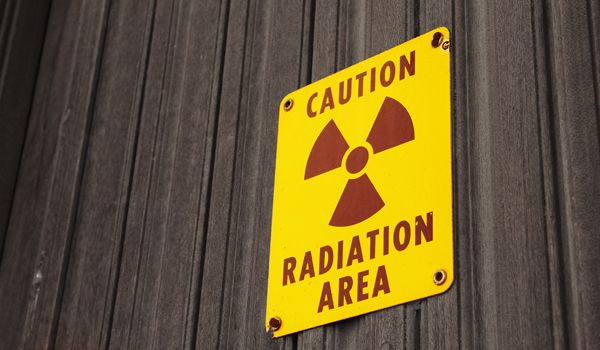Human Body Might Adapt to Radiation Exposure

Doctors who are regularly exposed to X-ray radiation may undergo changes in their cells that protect them from the radiation they encounter, a new study suggests.
These physicians have higher levels of a particular antioxidant called glutathione inside their red blood cells than physicians who don't use X-rays regularly, the study showed. In addition, some of these cells may be better able to self-destruct, which would be protective if they turned cancerous.
However, it's still not clear whether these changes will be beneficial in the long run, or reduce the physicians' cancer risk, said study researcher Dr. Gian Luigi Russo, a senior research scientist at the National Research Council (CNR) in Pisa, Italy. Instead, these alterations might be early indicators of a disease, Russo said.
In the meantime, doctors who frequently work around X-rays should take every precaution to reduce their risk of radiation exposure, the researchers said.
Adaptation to radiation
Interventional cardiologists are doctors who perform minimally invasive operations on the heart, and use X-rays to guide them. While the patients of these procedures receive the highest dose of X-ray exposure, the doctor encounters radiation that scatters off the patient and the walls.
The dose during a single operation is low, but it all adds up, the researchers said. Over a year, an interventional cardiologist may be exposed to the equivalent of 250 chest X-rays.
Sign up for the Live Science daily newsletter now
Get the world’s most fascinating discoveries delivered straight to your inbox.
"After 30 years of work, this corresponds to a lifetime's increased risk of developing cancer of approximately 1 in 100, although there is still some uncertainty in these risk estimates," the researchers said.
Russo and colleagues analyzed blood samples from 10 interventional cardiologists and 10 laboratory hospital workers who were not exposed to radiation as part of their jobs.
On average, the interventional cardiologists were exposed to 4 millisievert (mSv) of ionizing radiation per year, those some exposures were as high as 8 mSv. The average person in the United States is exposed to about 3 mSvs per year from natural sources, according to the United States Nuclear Regulatory Commission.
The researchers concluded these doctors may be adapting to their higher radiation exposure based on their levels of molecules called reactive oxygen species (ROS). ROS molecules can damage DNA if they get inside cells.
The interventional cardiologists had higher levels of ROS in the plasma surrounding their blood cells than the other doctors, however, inside their red blood cells, both groups had the about the same levels of ROS.
That means that the cardiologists cells were producing more glutathione, and protecting the cardiologists' cells from seeing their ROS levels spike, Russo told MyHealthNewsDaily.
Additional studies
The study is "extremely interesting," and shows the body has a way of changing to limit the negative side effects of radiation, said Dr. Michael Samuels, a radiation oncologist at the University of Miami Miller School of Medicine, who was not involved with the study. "At least on a theoretical basis, this is a mechanism that prevents radiation from harming those cells," Samuels said.
However, additional studies are needed using larger groups of people to determine the long-term effects of this type of radiation exposure, the researchers say. Wearing appropriate shielding material, including lead aprons, and reducing the radiation dose the patient receives during these operations, may let doctors reduce their radiation exposure, Samuels said.
The study is published online today (Aug. 23) in European Heart Journal.
Pass it on: It's possible exposure to chronic low doses of radiation may prompt beneficial adaptations in cells, but more research is needed to confirm this.
This story was provided by MyHealthNewsDaily, a sister site to LiveScience. Follow MyHealthNewsDaily staff writer Rachael Rettner on Twitter @RachaelRettner. Find us on Facebook.

Rachael is a Live Science contributor, and was a former channel editor and senior writer for Live Science between 2010 and 2022. She has a master's degree in journalism from New York University's Science, Health and Environmental Reporting Program. She also holds a B.S. in molecular biology and an M.S. in biology from the University of California, San Diego. Her work has appeared in Scienceline, The Washington Post and Scientific American.
Most Popular

